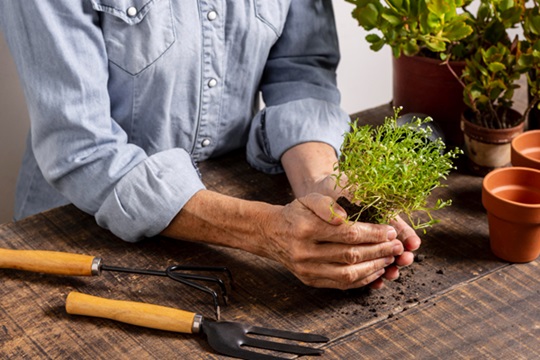Cultivating Heritage Vegetables for Flavor and Diversity
In an age dominated by hybrid vegetables and monoculture farming, heirloom gardening is experiencing a revival among gardeners who value flavor, diversity, and sustainability. Reviving the lost art of heirloom gardening is about reconnecting with a rich agricultural heritage that has been largely overshadowed by modern agricultural practices. By cultivating heritage vegetables, gardeners can enjoy unique flavors, contribute to the preservation of biodiversity, and pass on a legacy of sustainable gardening practices.
What Are Heirloom Vegetables?
Heirloom vegetables are open-pollinated plant varieties that have been passed down through generations, often for 50 years or more. Unlike hybrid plants, which are bred for specific characteristics and may not produce seeds true to type, heirloom plants maintain their genetic diversity and can be saved and replanted each year. This means that the vegetables you grow will have the same qualities as those your ancestors might have cultivated, ensuring a direct connection to the past.
The Historical Significance of Heirloom Gardening
Heirloom gardening dates back centuries and represents the rich agricultural diversity that existed before the industrialization of farming. Each heirloom variety has a story to tell—whether it was a family favorite, a regional staple, or a crop that survived against all odds. By reviving the lost art of heirloom gardening, you are not only preserving these unique varieties but also the cultural and historical significance they hold.
- Preservation of Biodiversity: Heirloom plants contribute to the preservation of genetic diversity, which is essential for the resilience of our food systems.
- Cultural Heritage: Growing heirlooms allows you to connect with the past and preserve the agricultural traditions of different cultures and regions.
Why Choose Heirloom Vegetables?
Choosing heirloom vegetables over modern hybrids offers several benefits that go beyond just growing a garden. From superior flavor to environmental sustainability, heirloom gardening has much to offer both the novice and experienced gardener.
Superior Flavor and Nutritional Value
One of the most compelling reasons to grow heirloom vegetables is their exceptional flavor. Unlike many commercially grown hybrids that are bred for uniformity, shelf life, and transportability, heirlooms are often selected for taste and texture. This means you’ll experience vegetables as they were meant to taste—rich, complex, and packed with nutrients.
- Rich Flavor Profiles: Heirloom tomatoes, for example, offer a variety of flavors, from sweet to tangy, that are often missing in store-bought varieties.
- Nutrient Density: Many heirloom varieties have higher nutritional content because they have not been bred for high yields at the expense of nutrient levels.
Environmental Sustainability and Seed Saving
Heirloom gardening promotes environmental sustainability by encouraging seed saving and reducing the dependence on commercial seed suppliers. By saving seeds from your heirloom plants, you can create a self-sustaining garden that evolves and adapts to your local environment.
- Seed Saving: Learn the art of seed saving to preserve your favorite heirloom varieties and pass them down to future generations.
- Reduced Environmental Impact: Heirlooms are typically more resilient to local pests and diseases, reducing the need for chemical interventions.
Promoting Biodiversity and Resilience
Growing a diverse range of heirloom vegetables enhances your garden’s biodiversity and resilience. This diversity is crucial in combating the challenges posed by climate change, pests, and diseases. By cultivating a variety of plants, you create a more robust ecosystem that can withstand environmental stresses.
- Genetic Diversity: Heirlooms contribute to the genetic diversity of crops, which is vital for food security and ecological balance.
- Resilience: A diverse garden is less vulnerable to pests and diseases, as some plants will always thrive under varying conditions.
How to Start an Heirloom Garden
Starting an heirloom garden requires careful planning and a commitment to preserving these treasured varieties. Here’s a step-by-step guide to help you get started on your journey of reviving the lost art of heirloom gardening.
Selecting the Right Heirloom Varieties
Choosing the right heirloom varieties for your garden is the first step in ensuring a successful harvest. Consider your climate, soil type, and personal preferences when selecting seeds. Researching the history and characteristics of each variety can also enhance your connection to the plants you grow.
- Climate Compatibility: Select varieties that are well-suited to your local climate to ensure they thrive in your garden.
- Personal Preferences: Choose vegetables that you enjoy eating and that have unique flavors or colors that appeal to you.
- Heritage and Story: Consider the history behind each heirloom variety. Some gardeners enjoy growing plants with a particular cultural or family significance.
Sourcing Heirloom Seeds
Finding quality heirloom seeds is crucial for a successful garden. Look for reputable seed suppliers that specialize in heirloom varieties and are committed to preserving plant diversity.
- Reputable Seed Companies: Purchase seeds from companies that are known for their commitment to heirloom varieties, such as Seed Savers Exchange or Baker Creek Heirloom Seeds.
- Seed Swaps and Exchanges: Participate in seed swaps or join local gardening clubs to exchange heirloom seeds with other gardeners.
Planting and Caring for Heirloom Vegetables
Heirloom vegetables require the same basic care as other plants, but with a few additional considerations to ensure they thrive and maintain their unique characteristics.
- Soil Preparation: Ensure your soil is rich in organic matter and well-drained. Heirloom plants often perform best in nutrient-rich, loose soil.
- Planting Techniques: Follow the specific planting instructions for each heirloom variety, paying attention to spacing, depth, and sunlight requirements.
- Pest and Disease Management: Use organic and sustainable practices to manage pests and diseases. Heirlooms can be more susceptible to certain issues, so regular monitoring is essential.
- Watering and Fertilizing: Provide consistent moisture and use organic fertilizers to support healthy growth and robust yields.
Saving and Sharing Heirloom Seeds
One of the joys of heirloom gardening is the ability to save and share seeds. This practice not only preserves plant varieties but also fosters a sense of community among gardeners.
The Basics of Seed Saving
Seed saving involves collecting seeds from your healthiest and most productive plants at the end of the growing season. Proper seed saving techniques ensure that the seeds remain viable and true to type.
- Select the Best Plants: Choose seeds from plants that have thrived in your garden and exhibit desirable traits, such as flavor and disease resistance.
- Harvesting Seeds: Allow fruits and vegetables to fully mature on the plant before harvesting seeds. For example, tomatoes should be fully ripe, and beans should be dry and brittle.
- Drying and Storing: Clean and dry the seeds thoroughly before storing them in a cool, dry place. Label your seeds with the variety name and the date of harvest.
Sharing and Exchanging Heirloom Seeds
Sharing heirloom seeds with other gardeners is a rewarding way to spread the love for these unique plants. Seed exchanges, either in person or online, are excellent opportunities to expand your collection and preserve plant diversity.
- Participate in Seed Swaps: Join local seed swaps or online communities dedicated to heirloom gardening.
- Educate Others: Share your knowledge of heirloom gardening with friends and family to inspire them to grow heritage vegetables.
Conclusion: Embrace Heirloom Gardening for Flavor, Diversity, and Sustainability
Reviving the lost art of heirloom gardening is more than just growing vegetables; it’s about preserving history, promoting sustainability, and enjoying the unparalleled flavors that heritage vegetables offer. By cultivating these time-honored plants, you contribute to the conservation of biodiversity and ensure that future generations can experience the richness of our agricultural heritage.
Are you ready to start your heirloom garden? Explore our other blog posts for more tips on sustainable gardening practices and discover the best heirloom varieties for your garden. Don’t forget to share your heirloom gardening experiences with us in the comments or on social media!


Leave a Reply